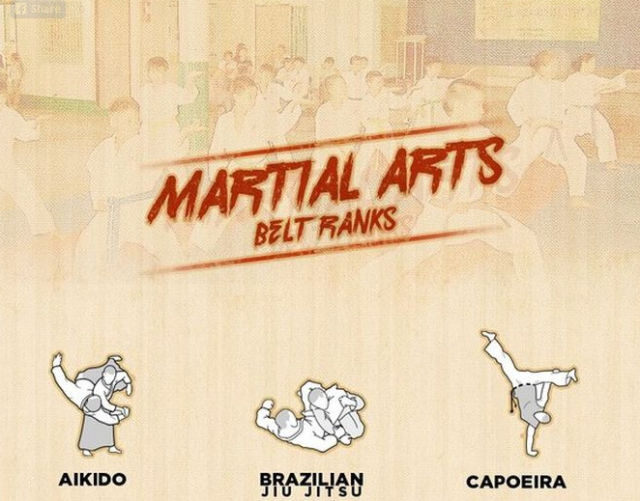Come Check Out The Fascinating World Of Martial Arts, Where Old Customs Satisfy Modern-Day Performance - A Journey Right Into History And Viewpoint Awaits.
Come Check Out The Fascinating World Of Martial Arts, Where Old Customs Satisfy Modern-Day Performance - A Journey Right Into History And Viewpoint Awaits.
Blog Article
visit the up coming internet page -Lauridsen Friedman
Enter the ancient world where martial arts were substantiated of necessity in varied regions. Cultures crafted special combating styles linked with historic contexts. which martial arts is best for me evolved over centuries via devoted practice and social exchanges. Today, modern-day martial arts mix conventional aspects for maximum efficiency. Philosophically, martial arts stress discipline, self-improvement, and harmony. Respect, humbleness, and equilibrium are fundamental concepts directing experts towards development and durability. Explore the depths of this rich history and viewpoint to discover the profound influences shaping this long-lasting self-control.
Origins of Fighting Style
Fighting style originated in numerous regions around the world, evolving as useful fight systems to resist threats. These old battling styles were created out of requirement, with each society crafting techniques matched to their distinct atmospheres and difficulties. From the grappling arts of Jujutsu in Japan to the striking strategies of Kung Fu in China, martial arts were deeply intertwined with the historical, social, and cultural fabric of their particular cultures.
In Japan, the samurai course polished martial arts like Kenjutsu, the art of the sword, which later evolved right into the much more popularized kind of Kendo. On the other hand, in Brazil, Capoeira emerged as a mix of dancing and fight, produced by enslaved Africans as a way to resist oppression. Each martial art lugs with it an abundant history and philosophy, reflecting the worths and ideas of individuals that exercised them.
As you explore the origins of martial arts, you uncover a tapestry of human ingenuity, durability, and the stubborn spirit of warriors throughout time.
Advancement of Techniques
Through centuries of method and refinement, combat techniques within different martial arts have undergone an extensive advancement. From ancient styles like Kung Fu and Martial arts to a lot more contemporary disciplines such as Brazilian Jiu-Jitsu and Krav Maga, the evolution of strategies has been driven by a combination of cultural influences, functional applications, and technical advancements.
One significant facet of this development is the cross-pollination of techniques in between different martial arts. As an example, strategies from typical Japanese Jiu-Jitsu were incorporated into the creation of Judo by Jigoro Kano in the late 19th century. This blending of designs has actually led to the growth of crossbreed martial arts like Mixed Martial Arts (MMA), which incorporate elements of striking, grappling, and submission strategies.
In addition, the development of techniques has been shaped by the enhancing emphasis on efficiency and efficiency in combat. Practitioners have continuously sought to refine their techniques through rigorous training, testing, and competition, causing the development of extremely specialized and reliable combating designs. In general, the advancement of techniques in martial arts mirrors the dynamic nature of fight and the ongoing pursuit for improvement and innovation.
Thoughtful Structures
Discovering the underlying philosophical principles of martial arts provides understanding into their core worths and directing beliefs. At the heart of numerous martial arts techniques is the concept of technique itself. By educating your body and mind to work as one natural device, you grow discipline that extends beyond the dojo or fitness center into everyday life. This self-control incorporates regard, humbleness, and self-discipline, forming not just your physical capacities but also your personality.
Another basic philosophical structure in martial arts is the idea of constant self-improvement. The trip of grasping a martial art is never-ending, with practitioners frequently striving to much better themselves, both physically and psychologically. This concentrate on development promotes resilience, willpower, and a development mindset that can be related to all facets of life.
In addition, martial arts stress the importance of harmony and balance. Techniques are made to make use of an opponent's energy against them, highlighting the principle of producing and rerouting force as opposed to satisfying it head-on. This philosophy reaches interpersonal connections, promoting peaceful resolutions and mutual understanding. By welcoming these thoughtful structures, martial musicians not just improve their combat abilities however additionally cultivate a way of life centered on individual development, respect, and consistency.
Verdict
In conclusion, the background and viewpoint of martial arts supply a rich tapestry of practice, self-control, and self-improvement.
Consider example the tale of Bruce Lee, who revolutionized martial arts by blending various designs and viewpoints to create his very own distinct type of Jeet Kune Do.
With commitment and development, martial artists continue to press boundaries and inspire others to reach their full potential both in combat and in life.
